Overclockable Pentium Anniversary Edition Review: The Intel Pentium G3258
by Ian Cutress on July 14, 2014 10:00 AM EST- Posted in
- CPUs
- Intel
- Pentium
- Overclocking
- Pentium-AE
- G3258
Gaming and Synthetics on Processor Graphics
The Haswell Pentium and Celeron ranges are filled with GT1 solutions, referred to as simply 'HD (Haswell)'. The same is true for Sandy Bridge and Ivy Bridge, although with Haswell the i3 CPU range upgraded to HD 4400 or HD 4600 - a significant leap in performance. As the graphics power is low for full 3D titles, and as such we test on lower frequencies, we might see the CPU power matter more here than with our Devil's Canyon review.
F1 2013
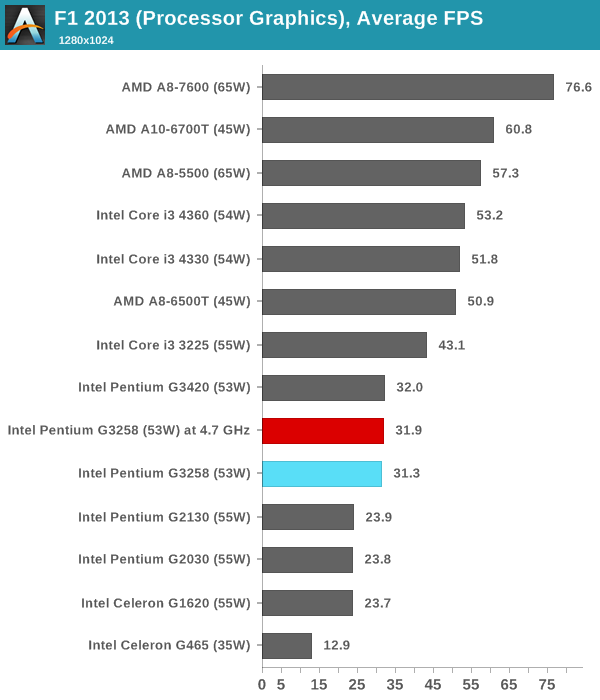

Bioshock Infinite
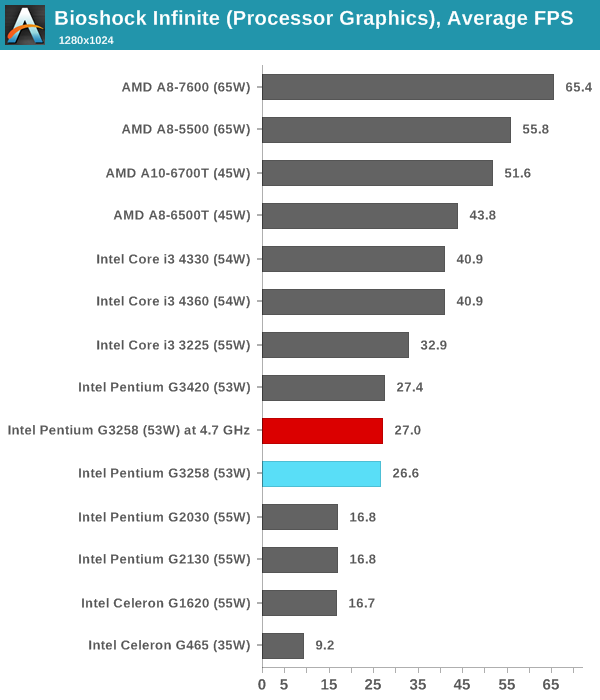

Tomb Raider
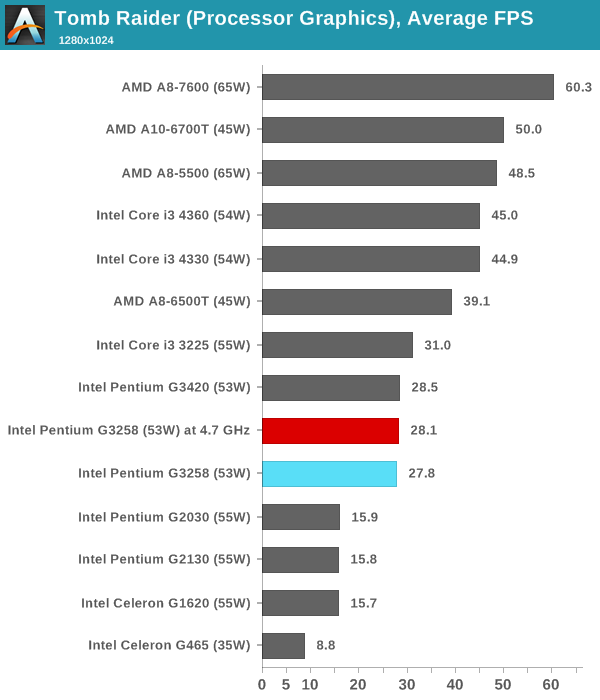
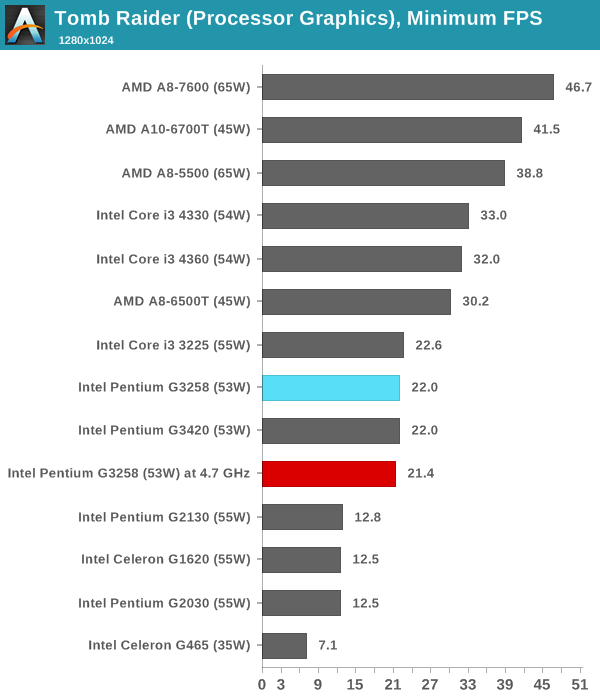
Sleeping Dogs
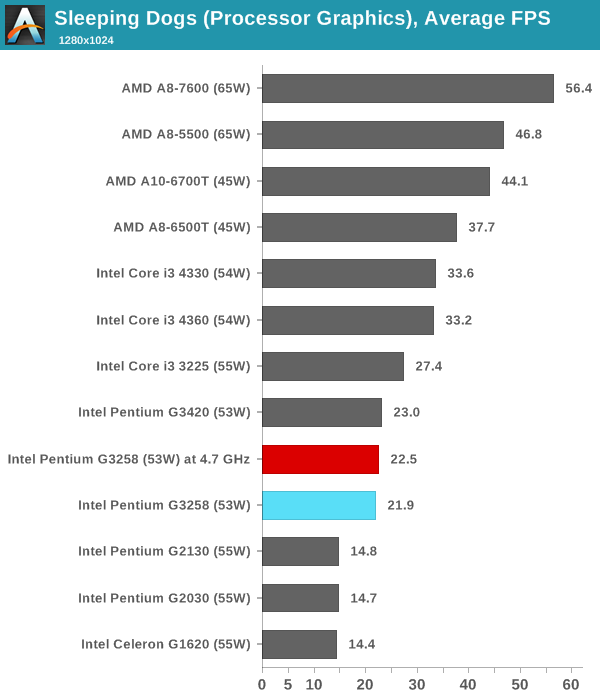
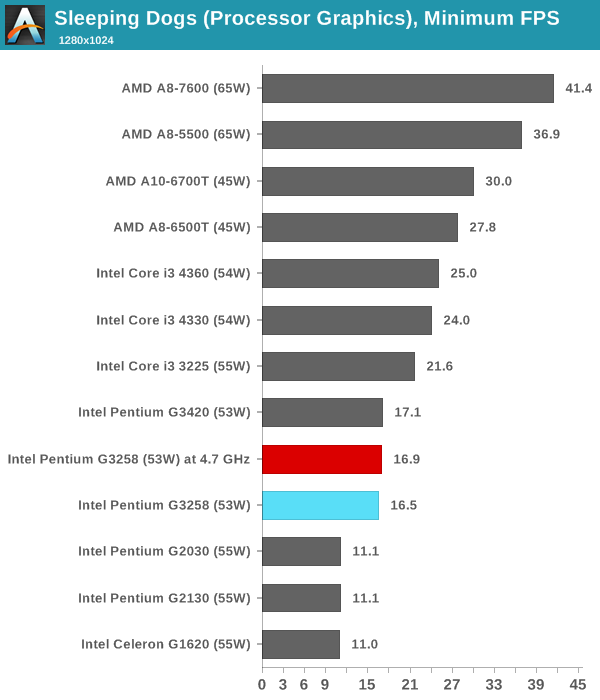
Company of Heroes 2
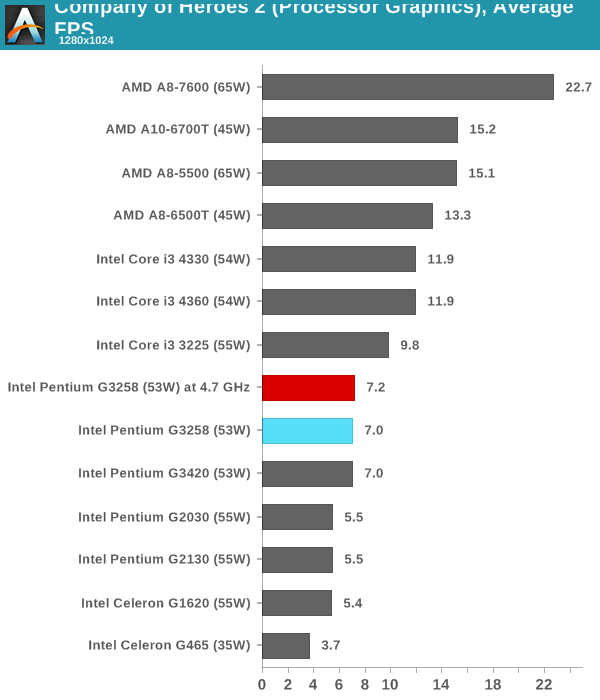
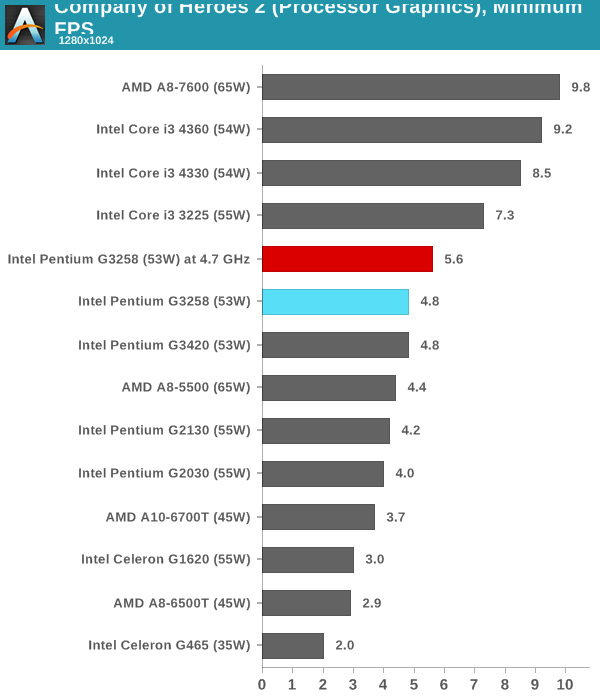
CompuBench 1.5
CompuBench is a new addition to our CPU benchmark suite, and as such we have only tested it on the following processors. The software uses OpenCL commands to process parallel information for a range of tests, and we use the flow management and particle simulation benchmarks here.
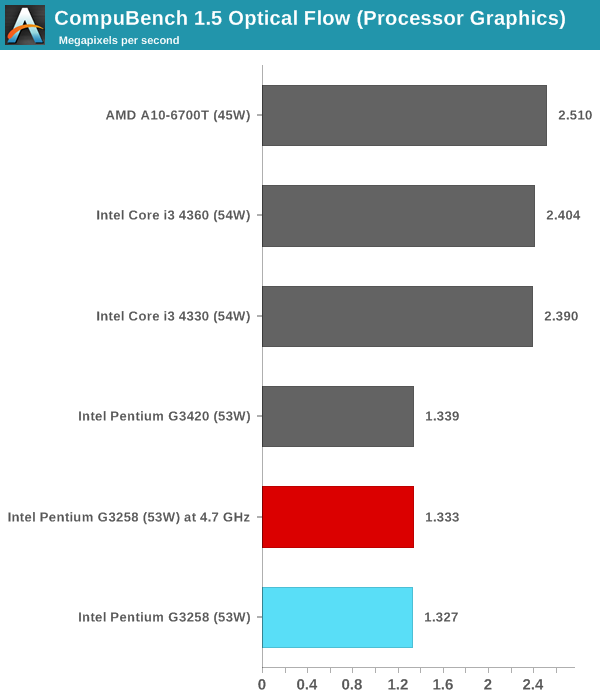
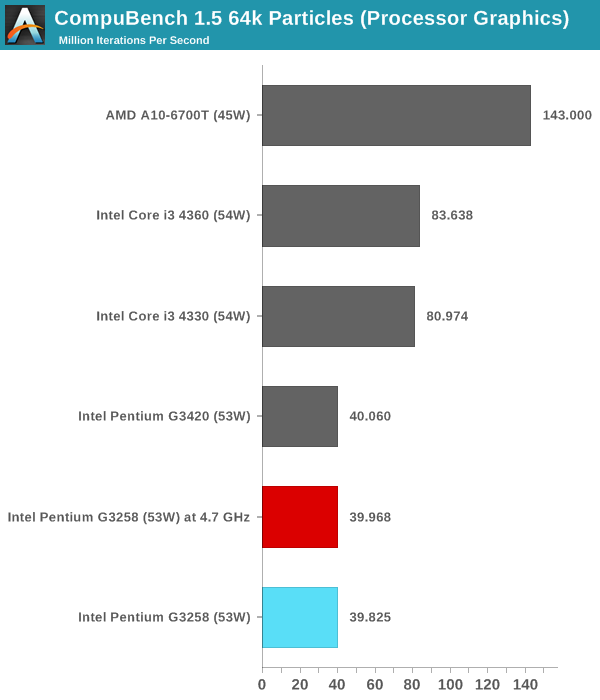
3DMark Fire Strike
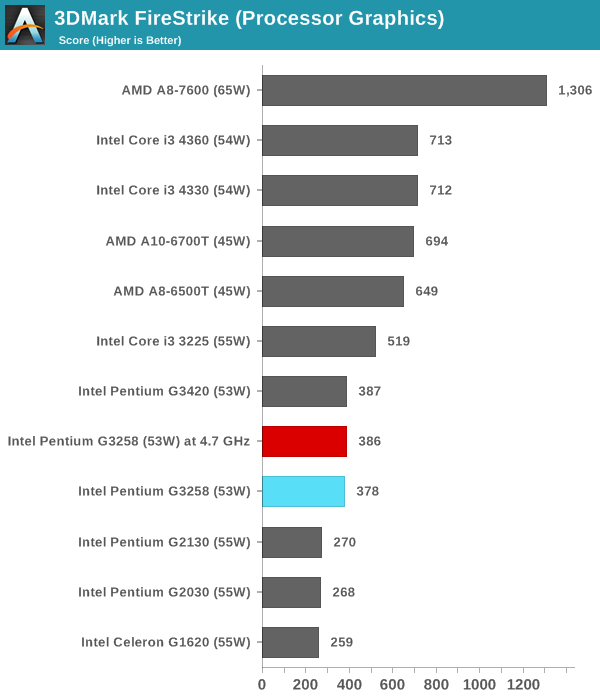
The increase in speed due to overclocking only has one effect on gaming using the internal graphics - a slight advantage to minimum frame rates. Unfortunately the IGP is crippled too much to see any gain in performance for average frame rates and AMD APUs at similar power outputs have up to a 2x advantage.










96 Comments
View All Comments
Computer Bottleneck - Tuesday, July 15, 2014 - link
FWIW, On my stock cooler 4.6 Ghz open-air Prime 95 stability test (in-place large FFTs, maximum power consumption) and Battlefield 3 64 player I used Speed fan 4.49 to monitor temps. However, I did notice MSI Afterburner v3.0.1 and HWiNFO64 v4.40 were recording temps 10 to 15 C higher than Speedfan 4.49.With that mentioned, I did not notice any throttling during my 4.6 Ghz stock cooler (open air environment) Prime 95 stability test. Nor did I see this during BF3 64 player gameplay.
tuxRoller - Tuesday, July 15, 2014 - link
It supports ecc ram.Hardball - Monday, July 14, 2014 - link
What type of cooling was used/is recommended in order to get a G3258 to 4.5GHz+? If you need high end air or AIO water ($80-120), it kind of runs counter to the idea of building the cheap, high performing system.Ian Cutress - Monday, July 14, 2014 - link
If you cheap on everything, then it won't ever be high performing. I used a Corsair H80i for these numbers during a nice warm British summer. The best place to start for overclocking would be a cooler with at least four copper heatpipes and a decent fan, then go from there.smunter6 - Monday, July 14, 2014 - link
Can you run power draw numbers for this system? Starting TDP for the Pentium is 53 W, I don't think it would run much above 100-150 W overclocked. Stock Intel cooler is rated for 95W, and even your cheapest aftermarket cooler should be good for much more than that.Ian Cutress - Monday, July 14, 2014 - link
System power draw numbers are in the overclocking chart, first page. You probably scrolled past them in order to comment :DWith my inefficient setup, it registered 93W at peak load at stock, moving up to 131W overclocked to 4.7 GHz.
smunter6 - Monday, July 14, 2014 - link
My bad...should have re-read. Performing some terrible math here, but if we assume 53W at stock speeds, then that's 40 W system overhead. At 131W at 4.7 GHz, approx. 93W for the CPU. On the edge for Intel's cooler, but definitely doesn't require anything that fancy to cool. An AMD A10 is around 100W TDP. And if you're willing to drop a point or two to 4.5 or 4.6 GHz, the power draw is even less.Samus - Monday, July 14, 2014 - link
The stock cooler is rated at 95w for how long? Because my experience, even going back to the i7-920, is the stock cooler can't keep a chip running at default frequency/voltage for more than a few hours at full load without throttling. Those coolers were supposedly rated at 130w, just like the CPU. But as the surface area heats up across every mm of fins and the ambient case temp jumps just a few degrees, the performance dips.Top-down coolers are a 20th century thing.
smunter6 - Monday, July 14, 2014 - link
the i7-920 is a 130W TDP part. The Pentium is 53W, and even when at max overclock, the total system power draw is only 131W. Totally different ball game.extide - Tuesday, July 15, 2014 - link
Are you kidding me? ALL stock intel CPU fans will allow the cpu they come with to run at 100% load 24/7 without throttling. If you are having problems making that happen, you are doing something wrong.